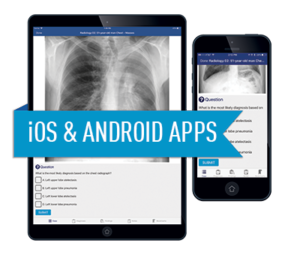Help Maximize Student Learning
Orienting your students to Aquifer will make a big difference in their learning experience. You can help them maximize their learning by sharing some key information to help them get started and understand how Aquifer fits into your plans for your course or clerkship.
3 Steps to Successful Orientation
As always, we’re here to help! Aquifer has developed resources to make it easy for you to share key points with students in a quick, engaging way. We’ve also identified the key questions you’ll need to consider about how Aquifer is integrated into your course to be sure students clearly understand your expectations.
1
Start with Our Slides
We’ve created slides with the basics on Aquifer cases and useful tips for students, ready to drop into your course or clerkship orientation.
2
Watch Student Story Videos
Let your students hear from their peers to help them understand how Aquifer cases can help them advance their skills through complete, realistic clinical experiences. Show our two 1-minute videos in your orientation, or have your students watch them on their own by sharing this link: aquifer.org/students.
3
Share Goals & Expectations for Your Course or Clerkship
Orient students to your rationale for using the cases in your curriculum is important.
Recommended Article
We recommend reviewing the article below when planning your Aquifer use to understand key student insights.
Key Questions
Review the following questions during your course orientation or include the answers in your course materials.
Review the Aquifer educational goals with your students and articulate how you have chosen to incorporate them into your own course goals. Discuss how the cases will advance their understanding of the foundational concepts and clinical skills within your course.
Many educators require students to complete all of the cases within an Aquifer course. Other approaches include assigning specific cases to fill an important gap in clinical experience or in faculty teaching expertise or assigning a specified number of cases of the student’s choosing.
Students are encouraged to complete the remaining cases as needed. You may also wish to make your students aware of the additional courses that Aquifer offers with each subscription.
Regardless of your approach, ensure that your students clearly understand your expectations at the beginning of the course.
Most educators choose to use our student reports feature to monitor students’ case progress and engagement. Many document case completion to meet institutional case log or LCME requirements. Be clear with students at the beginning of your course that you will be monitoring their progress, and how and when they will be notified if they are falling behind, or devoting insufficient time and attention to the cases.
To assist students in pacing themselves through the cases, many educators assign a minimum number of cases to completed each week. Additionally, best practice suggests requiring students to complete a specific case prior to a didactic session or related clinical experience. Ensure students understand that case completion is a requirement and will be monitored through the student log report.
Our cases are very effective for self-directed learning and independent study. However, proactive students can further their understanding by intentionally integrating their learning from the cases with their clinical experiences. Consider suggesting these methods during your orientation.
- Completing or reviewing Aquifer cases just before or after seeing a patient with a similar presenting problem.
- Comparing and contrasting the presenting finding from an Aquifer case with their patients’ presentation.
- Applying the Aquifer clinical reasoning approach to their patient presentations and write-ups.
- Using the Aquifer summary statement rubric when writing summary statements in the patient record.
- Reviewing their questions about the cases with their preceptors or teaching residents.
- Applying practice guidelines identified in the cases to their own patients.
Our research has shown that intentionally building time into your course for students to work on the cases is a critical integration factor (Berman et al, Academic Medicine Academic Medicine 84(7):942-949, 2009). Identifying and listing time to work on the cases in your course calendar is a straightforward method to make this time clear to students.
Integrating assessment closes the curricular loop and demonstrates to students that you value the Aquifer content and their time spent working through the cases. In addition to our Calibrate Formative Assessment for progress testing, some programs assign the Aquifer Clinical Decision Making Exam for Internal Medicine as a summative assessment. Other ways programs use Aquifer in grading and assessment is to include case completion as part of course grade, review students’ Summary Statement responses compared to expert comments, assign students to complete Aquifer’s Case Analysis Tool (CAT), or ask them to present oral reports on Aquifer cases, considering them as standardized patients. An early understanding of how their Aquifer work will be assessed ensures student attention to the cases, and enhances their engagement.
Webinar: Engaging Your Students & Faculty with Aquifer
For more tips on engaging and orienting your students with Aquifer, catch our panel of educators and student contributors sharing their experiences.

Don’t Forget: Anytime, Anywhere Access
Be sure to let your students know that all cases are available via our mobile apps. Download “Aquifer Clinical Learning” for iOS and Android to complete work anytime, anywhere—including working offline.

